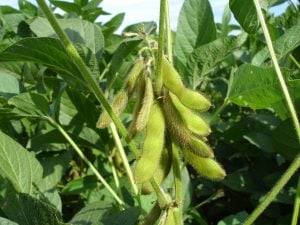 In a recent Knowledge Center article, we looked at bio-based Inks: “Bio-based Chemistries: A Deep Dive into the Ink Pool,”1 adding to our archive of many other articles presenting everything from BioPreferred status2 to regulatory updates and of course technical information for coatings in general.
In a recent Knowledge Center article, we looked at bio-based Inks: “Bio-based Chemistries: A Deep Dive into the Ink Pool,”1 adding to our archive of many other articles presenting everything from BioPreferred status2 to regulatory updates and of course technical information for coatings in general.
Bio-based products are derived from plants and other renewable agricultural and forestry materials and provide an alternative to conventional petroleum-derived products. Although some products approach 100% bio-based, realistically, many products contain a proportion of content developed from bio-based sources.
Suppliers are able to display a unique Certified Bio-based product label that highlights its percentage of bio-based content, as awarded by the U.S. Department of Agriculture (USDA). The USDA BioPreferred Program3 functions to encourage the use of renewable agricultural raw materials in products. ASTM d68664 was developed to standardize, certify and classify the bio-based content of materials. Minimum renewable carbon content categories (MRCC) have been established for purchasing by Federal agencies and their contractors.
A search of USPTO patent applications removes any doubt about the focused development of bio-based adhesives and their importance, as do publications of scholarly articles in peer-reviewed journals5,6. These advances continue, even with the declining prices of oil which is leading to lower cost feedstocks. Some are the result of the regulatory pressure on polyisocyanates as well as the use of formaldehyde.
The use of bio-based raw materials in resins and coatings is a growing area of interest as many companies are adding such materials to their product portfolio. Properly formulated bio-based adhesives can provide equivalent or superior performance to their non-bio-based counterparts, featuring low or no volatile organic compounds (VOC), low odor, and MRCC content to qualify as BioPreferred coatings. In addition, it is possible to eliminate the use of formaldehyde, alkylphenol ethoxylates (APEs) and polyisocyanates.
Soy flour, in particular, has found a use in structural/engineered wood products (plywood, oriented strand board, cross-laminated timber), as companies such as Columbia Forest Products and e2e have developed adhesives.
Oriented Strand Board (OSB) is an engineered wood panel manufacturerd from waterproof heat-cured adhesives and rectangularly-shaped wood strands. SOURCE: APA – The Engineered Wood Association

A number of bio-based raw materials are available for the production of renewable adhesives and sealants, including:
- succinic and other diacids
- natural oil polyols
- CO2-based polyols
- bio-isobutanol and 1,4-butanediol
- bio-based isocyanate alternatives
- furan dicarboxylic acid (FDCA) and esters
- bio-based epichlorohydrin
Several companies are also producing bio-based solvents (e.g. acetone, ethyl acetate) that have potential use in adhesive and sealants. Manufacturers of bio-based raw materials and resins include Alberdingk Boley, Cargill, Purac, Perstorp, ADM, BYK USA and Vertec Biosolvents.
The market for vegetable oil-based polyester polyols, which are also used for polyurethane (PU) manufacture, continues to grow, with improvements achieved in performance. There is a growing interest in alternative bio-based diacids and diols.
In addition to succinic acid, examples include:
- 1,3-propanediol
- octadecanedioic acid (C18/Elevance)
- FDCA (Avantium/BASF)
Advances are being made in the area of bio-based isocyanates, such as pentamethylene diisocyanate (PDI) and aliphatic polyisocyanates prepared from PDI by Covestro and Mitsui Chemical. Bio-based epichlorohydrin (ECH), which is prepared from bio-based glycerine/glycerol generated during the production of biodiesel, can be used in the synthesis of epoxides, useful in the preparation of adhesives and sealants based on epoxy resins.
Bio-based adhesives and raw materials will be successful if they are needed to meet regulatory requirements, if they offer novel or multifunctional properties or if they offer competitive or better performance than existing products on the market. There are already products that fall in to each of the three categories and the segment will just continue to grow.
Further Reading:
- Green Resin Technology – The Other Approach
- Using UV/EB Resins in Coatings
- Basics of Alkyd Resin Technology
- Sustainable Materials Increase Profitability for Coatings Companies
References:
- Bio-Based Chemistries: A Deep Dive into the Ink Pool
- Bio-based Resins for Coatings
- USDA BioPreferred Program
- ASTM D6866 – 16: Standard Test Methods for Determining the Biobased Content of Solid, Liquid, and Gaseous Samples Using Radiocarbon Analysis
- Fabrication of Soybean Protein-Acrylate Composite Mini-emulsion toward Wood Adhesive, European Journal of Wood and Wood Products, May 2017
- Bio-based adhesives and evaluation for wood composites application; Polymers, March 2017
The views, opinions and technical analyses presented here are those of the author or advertiser, and are not necessarily those of ULProspector.com or UL Solutions. The appearance of this content in the UL Prospector Knowledge Center does not constitute an endorsement by UL Solutions or its affiliates.
All content is subject to copyright and may not be reproduced without prior authorization from UL Solutions or the content author.
The content has been made available for informational and educational purposes only. While the editors of this site may verify the accuracy of its content from time to time, we assume no responsibility for errors made by the author, editorial staff or any other contributor.
UL Solutions does not make any representations or warranties with respect to the accuracy, applicability, fitness or completeness of the content. UL Solutions does not warrant the performance, effectiveness or applicability of sites listed or linked to in any content.



Leave a Reply or Comment